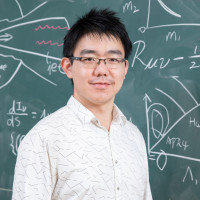Merger and post-merger of binary neutron stars with a quark-hadron crossover equation of state
- Date
- November 15 (Tue) 15:00 - 17:01, 2022 (JST)
- Speaker
-
- Yongjia Huang (Ph.D. Student, University of Science and Technology of China, China)
- Venue
- via Zoom
- Language
- English
- Host
- Etsuko Itou
The state of the ultra-dense matter remains one of the long-standing open questions. Neutron star (NS), as it cools down the eons ahead after the birth in the supernova explosion, provides an astrophysical laboratory to investigate the dense, strongly interacting nuclear matter at zero temperature. On the other hand, the most intense gravitational wave(GW) radiation is produced in regions of the strong gravitational field by coherent movements of masses with large compactness. Therefore, GW from binary neutron star(BNS) merger naturally contains the information from the ultra-dense matter.
In this talk, I will introduce our recent work, "Merger and post-merger of binary neutron stars with a quark-hadron crossover equation of state ."Quark-hadron crossover(QHC) is one way of hadron-quark transition, which generally predicts a peak in sound speed vs. density, and so releases more pressure during the hadron-quark transition. I will first briefly summarize the features of QHC EOS and the BNS merger. I will then focus on how information on the hadron-quark transition shows in the GW and its spectrum during the BNS merger.
This is a closed event for scientists. Non-scientists are not allowed to attend. If you are not a member or related person and would like to attend, please contact us using the inquiry form. Please note that the event organizer or speaker must authorize your request to attend.

